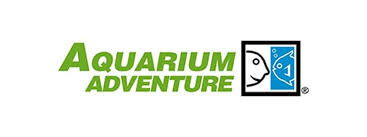
Aquarium Filters
Having ideal filtration in your aquarium can keep your fish healthy and thriving outside of their natural habitat. It keeps the water clean and clear and reduces the need for frequent tank maintenance. Aquarium Adventure Columbus can guide you in your pump and filter choices (external filters, specialty filters, etc.) and give you the best options to get the job done right. Read our blog for more insider tips and browse our lists of aquariums and products.
Power Filters
These filters, often referred to as hang on back filters, are rather common and probably what most people use on standard tanks. With most hang on back filters you will have all 3 stages of filtration, Biological, Chemical, and Mechanical filtration. All of these filters have small pumps or motors that pull the water from the tank into the filter. The water is then filtered and returns to your tank by trickling back out onto the surface of the water. These filters can also be a great way to subtly oxygenate your water by providing surface agitation as the water returns to the tank. Some of the benefits of hang on back filters would be their ease of use, quick ability to clean, and low cost of replacement filter material.
Canister Filters
Canister filters are large bucket style filters that are typically stored under the aquarium and use hoses that run up the back of the tank to pull and return water. These filters are great for larger aquariums or aquariums with lots of fish. These filters offer a bit more flexibility in terms of the different types of media you can add, and tend to be a bit quieter than other filters. Although, these filters may cost more, they make up for it in high water volume flow capacity and overall cleanliness.
Sumps
A sump filtration system is one you typically see on larger aquariums, especially saltwater aquariums. These aquariums are specially designed to accommodate sump filtration by having holes drilled in the bottom glass of the aquarium along with overflow covers to keep components hidden. Sumps are large and typically made out of glass or acrylic. These go underneath the stand and are then plumbed up through the holes in the bottom of the aquarium. Since these are so large, they allow the user to be very creative with the different types of filtration media. It can also be a great place to add something like a refugium for the tank.
Ultra-Violet Sterilizers
UV Sterilizers for aquariums are growing in popularity and are an innovative method for eradicating free-floating algae microorganisms in the water column. These are commonly used and recommended when you notice your tank or pond has green soupy looking water. The UV light will kill the free floating algae cells, keeping the water crystal clear.
Aquarium Filters
Filtration is the process that allows us to keep fish alive and healthy outside their natural habitat. It helps clean the water so that the fish can live for extended periods of time without constant aquarium maintenance. Waste products excreted by animals which include ammonia, are extremely toxic and life threatening. The primary purpose of filtration is to remove toxic waste products produced by aquarium animals. They work by using a combination of three types of filtration:
Mechanical
Mechanical filtration is the removal of particulates floating in the water column. Generally, this is the first stage of filtration, and is a physical process acting like a sieve as water passes through a medium that selectively traps large particles out of the current. This can help keep the water from being cloudy or silty and make it crystal clear. The medium used can be substrate (such as gravel or rock), sponge, filter cotton floss, a micron sock or diatomaceous earth powder. Mechanical filters will clog over a time period and will need to be cleaned or replaced when this happens.
Chemical
Chemical filtration generally follows mechanical filtration in most filters. A chemical filter is a medium that chemically traps or releases compounds as the water passes over and through it. There are many chemical filters that can be used to freshen water, but carbon or charcoal is the most common. Carbon is a substance that has many pockets and bonding sites on it, so that impurities, colors, and odors can attach to it, much like a magnet. There is a finite amount of these bonding sites, so eventually the carbon must be replaced. Some chemical mediums (i.e. resins) work like a “sponge” and absorb certain elements and ions from the water. It is important to note that while carbon can help “clean” a tank from byproducts and pollution, it is not a suitable replacement for biological filtration.
Biological
This type of filtration is the PRIMARY and by far the most important for keeping fish in an aquarium. From the moment fish are introduced into the aquarium, they begin releasing ammonia, their principle waste product. If allowed to build, this ammonia can kill fish by damaging the gill tissues and preventing them from taking in oxygen. Beneficial (good) bacteria help us filter the water biologically. Essentially, waste laden water passes over bacteria, which consumes the waste and converts it into less toxic compounds, allowing our fish to thrive.
The growth and establishment stages of bacterial colonies are what are referred to as “cycling” the aquarium. In all, it takes about 4-6 weeks to develop a nicely “conditioned” or “cycled” aquarium. However, once complete, the bacterial colonies will continue to reproduce on their own, increasing their quantity based on the number of fish or “bio-load” thus maintaining a safe water quality environment.




